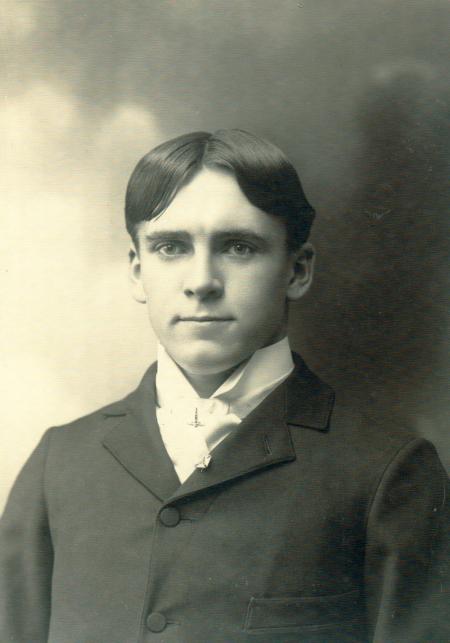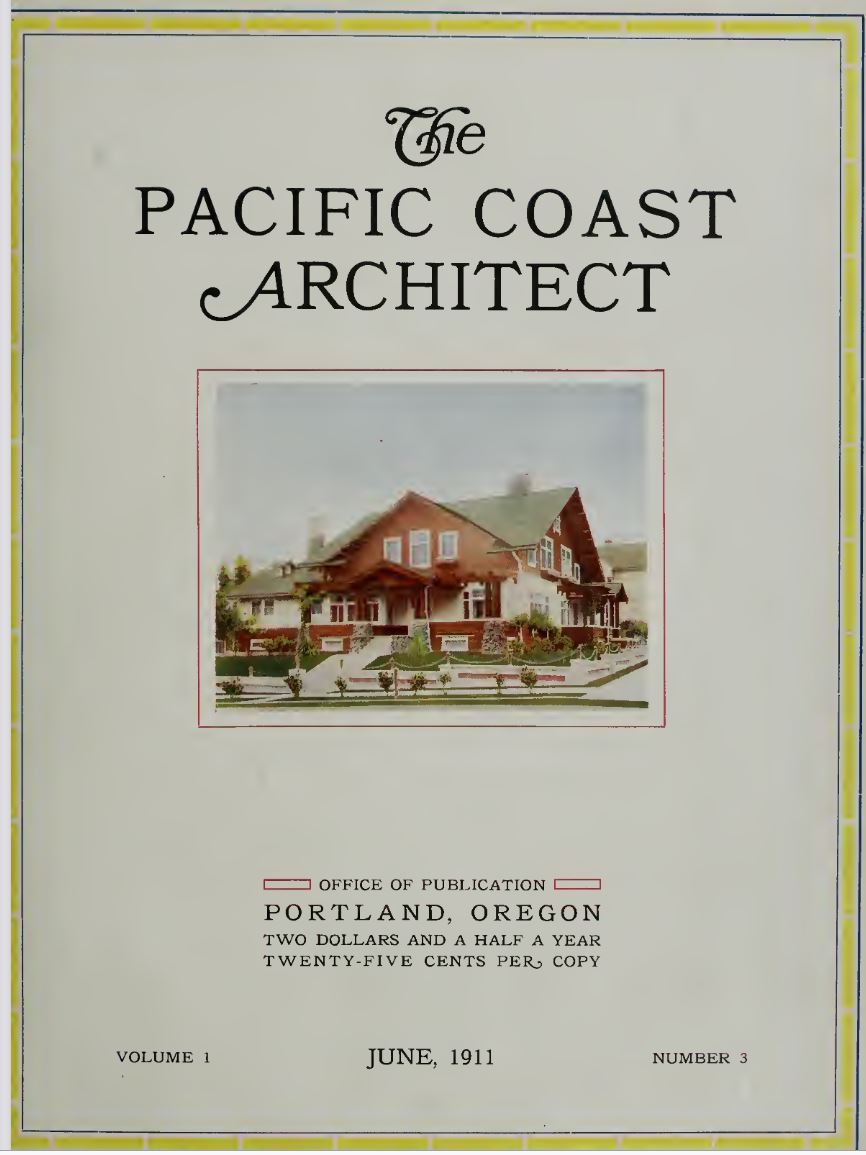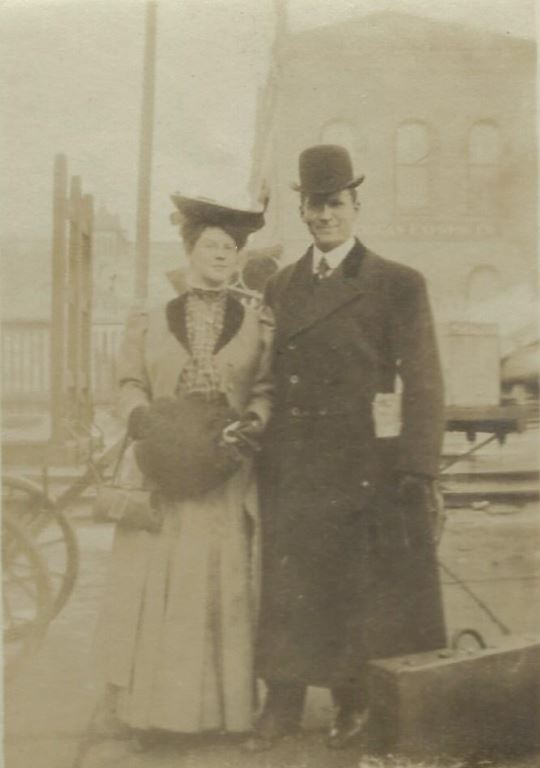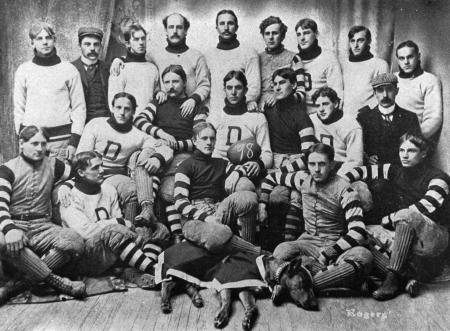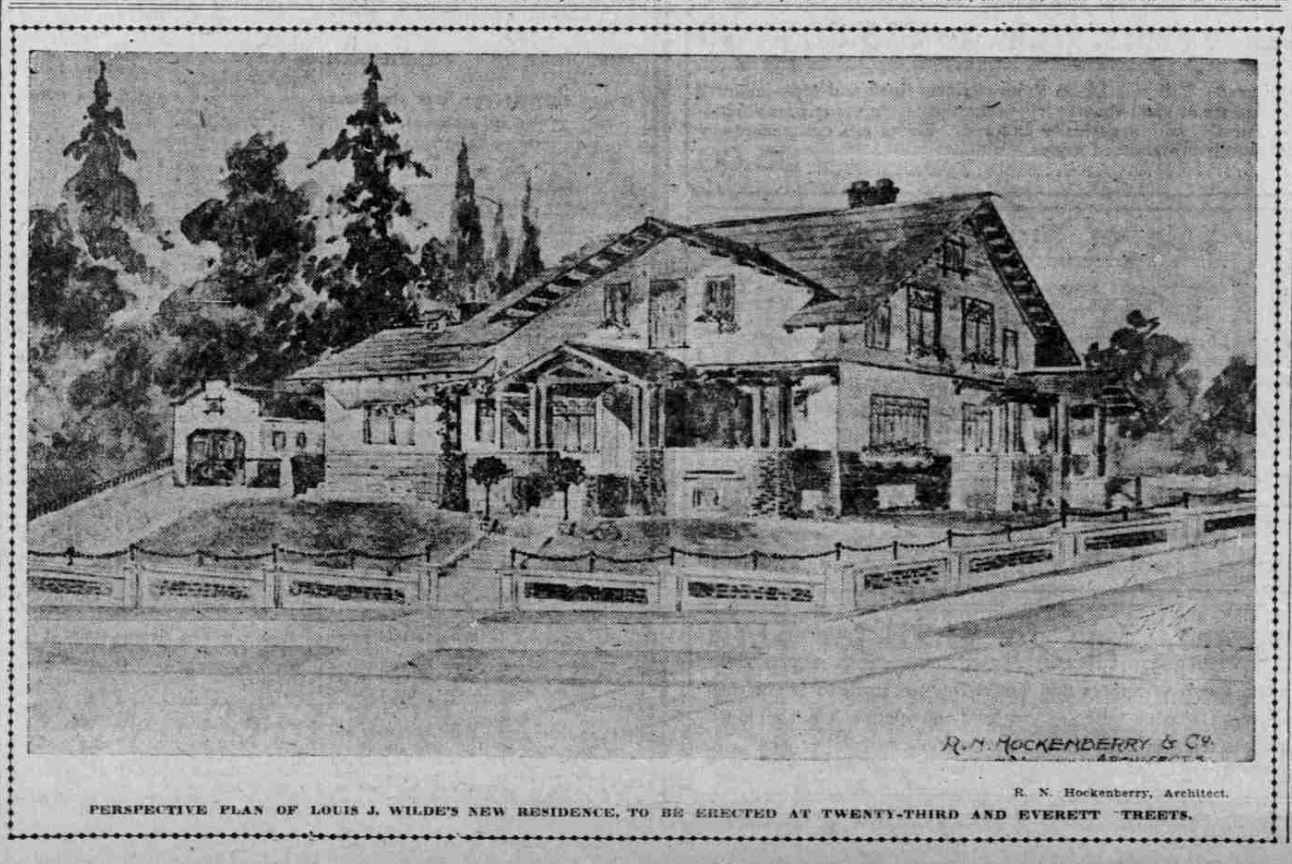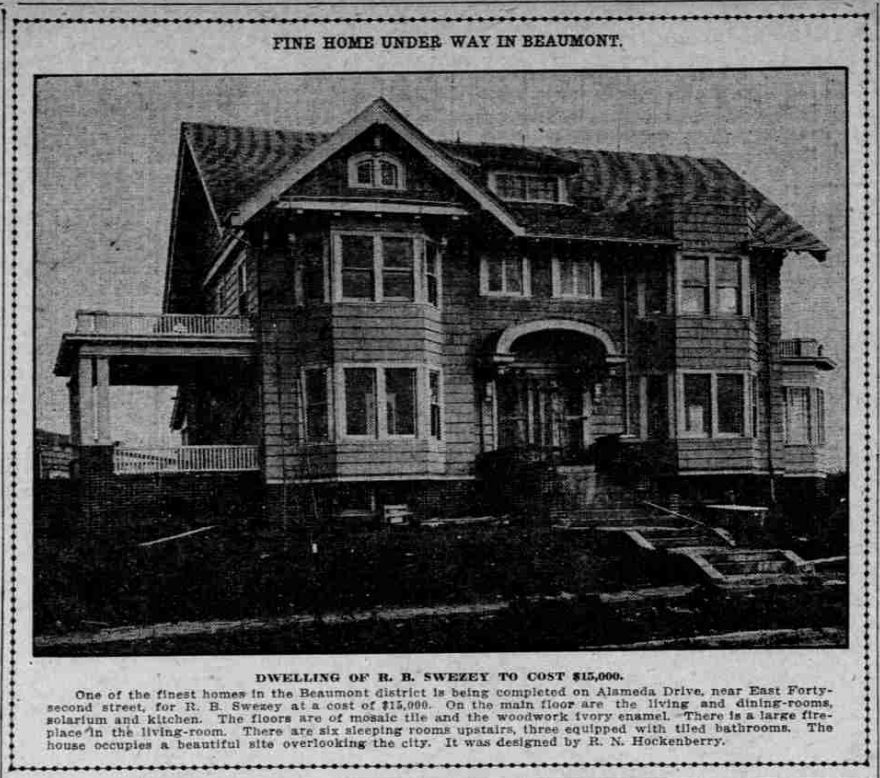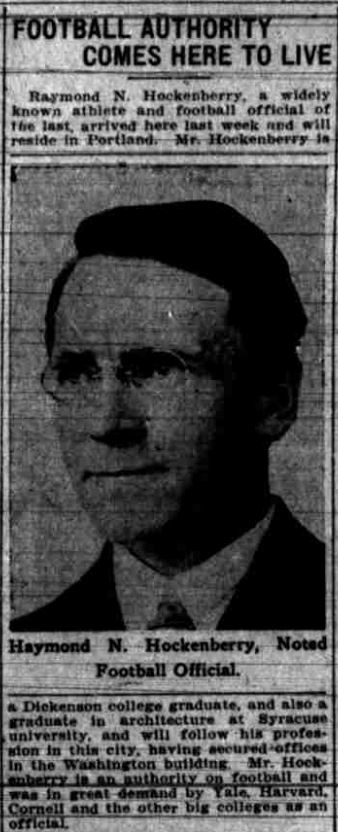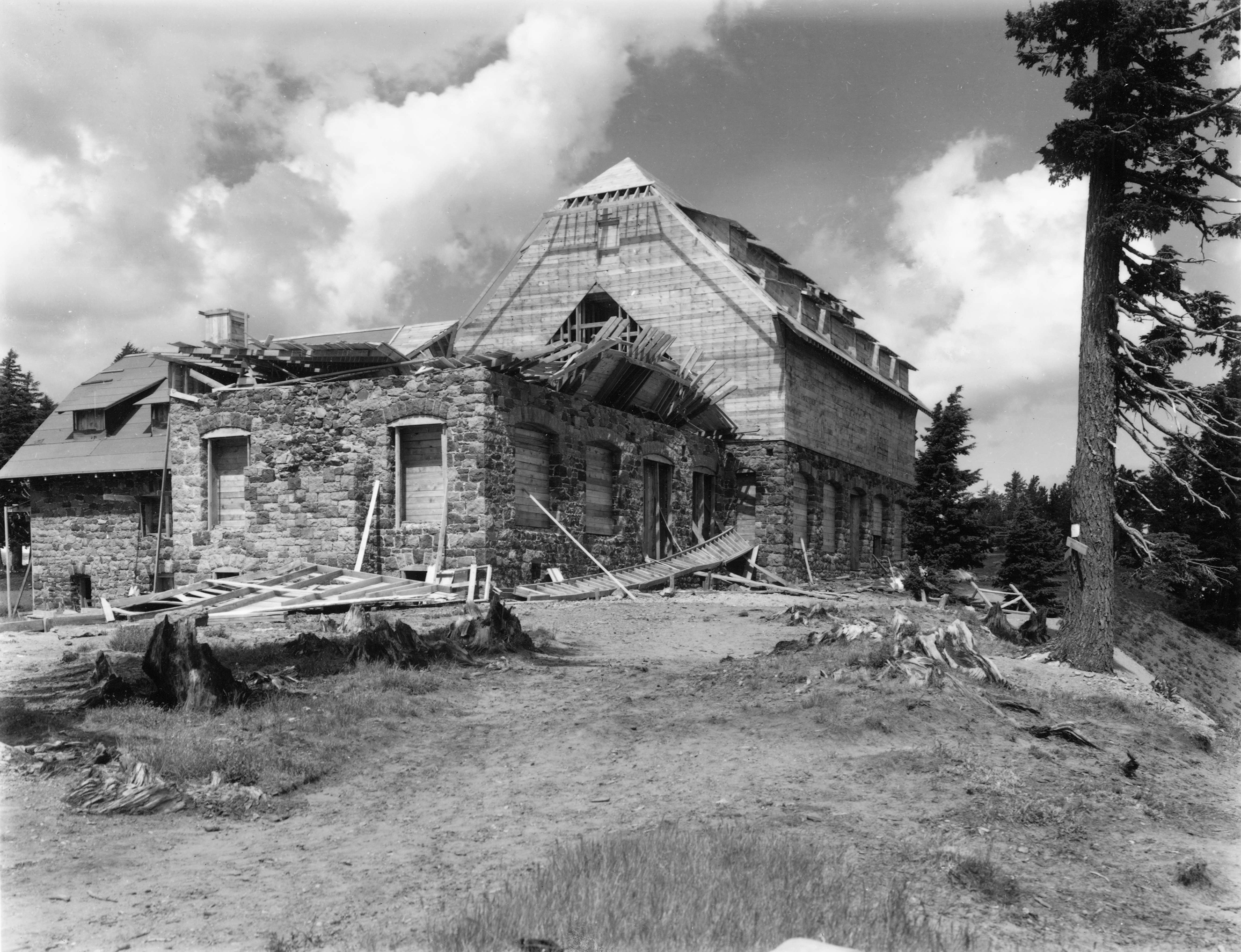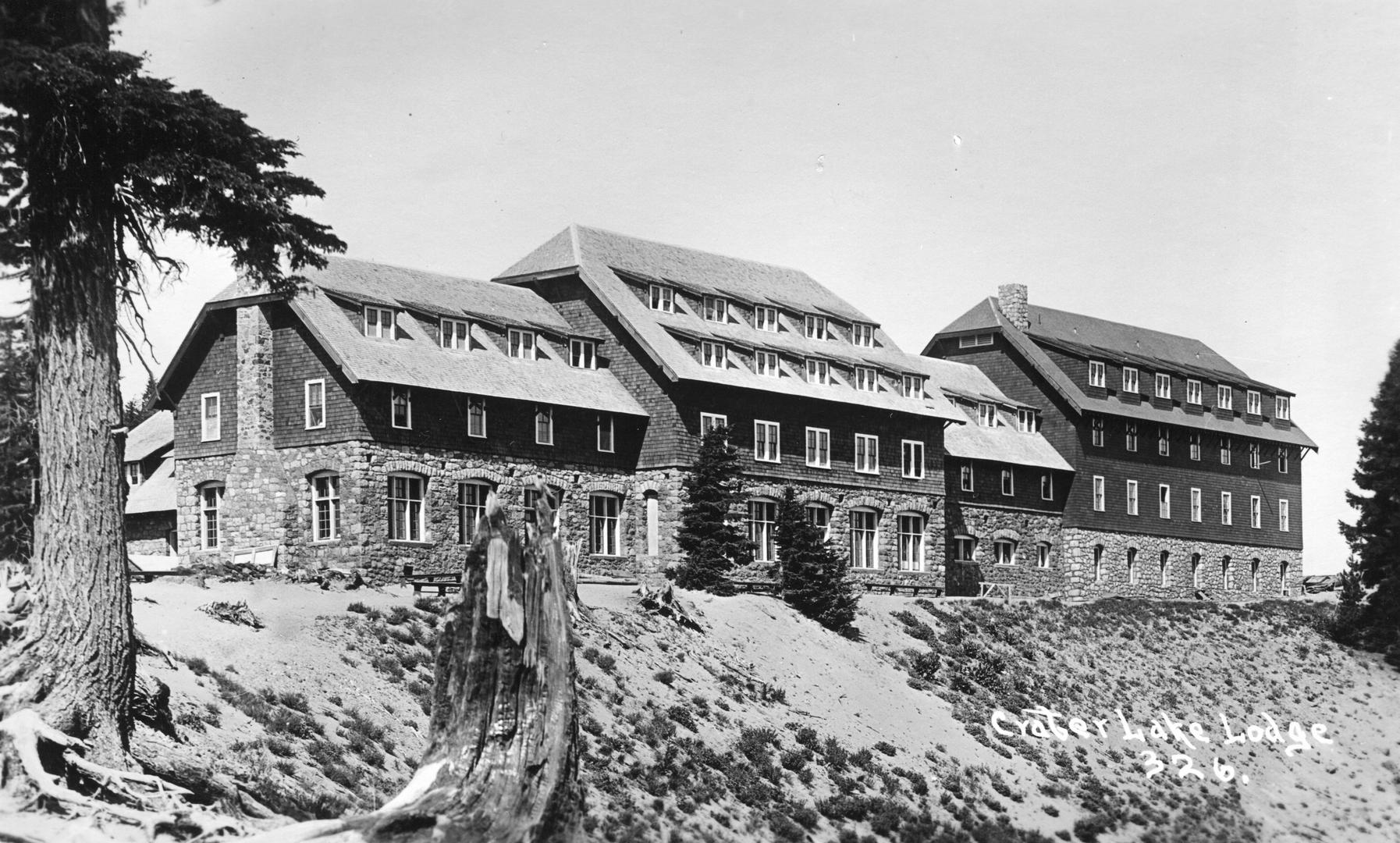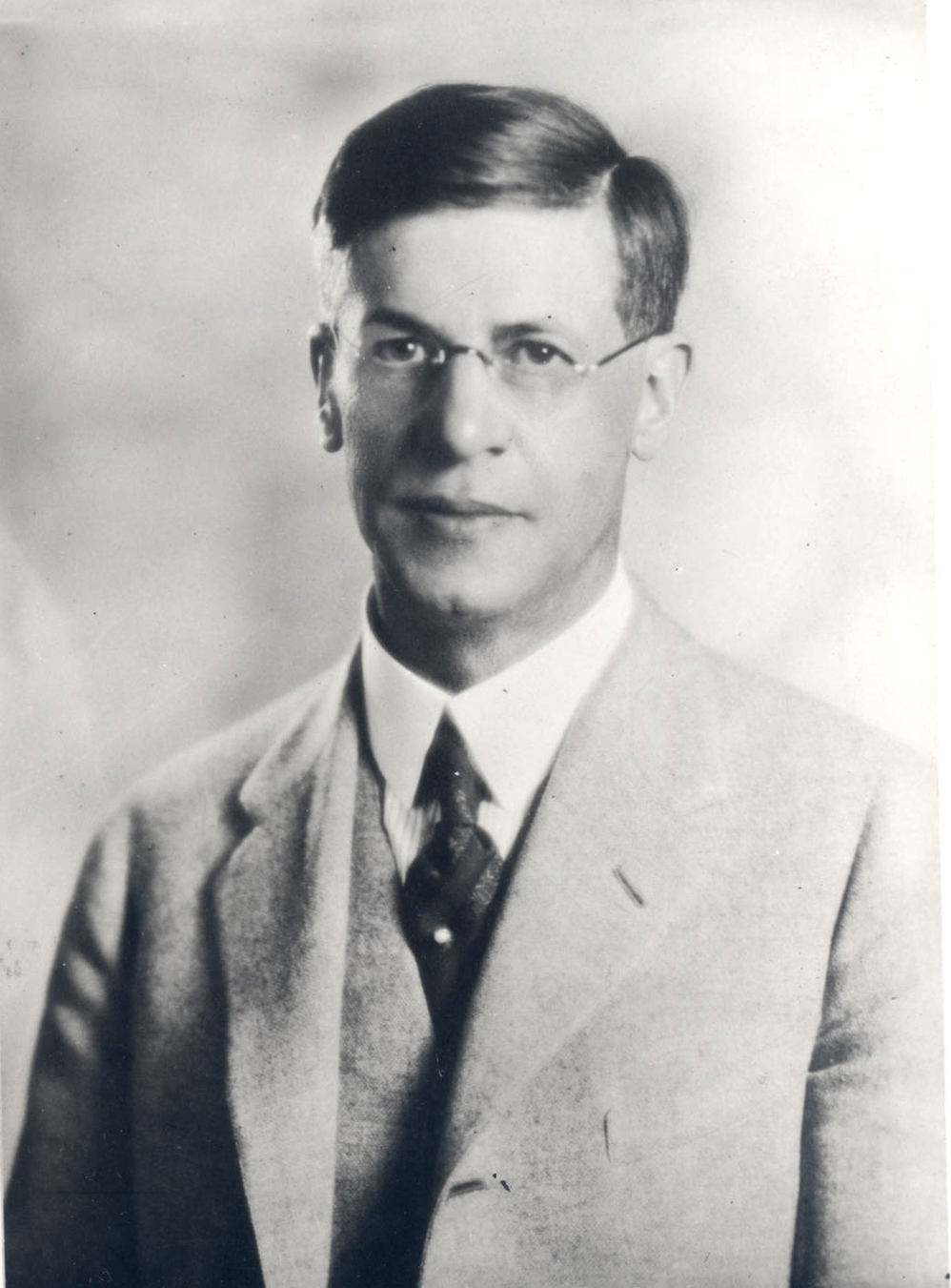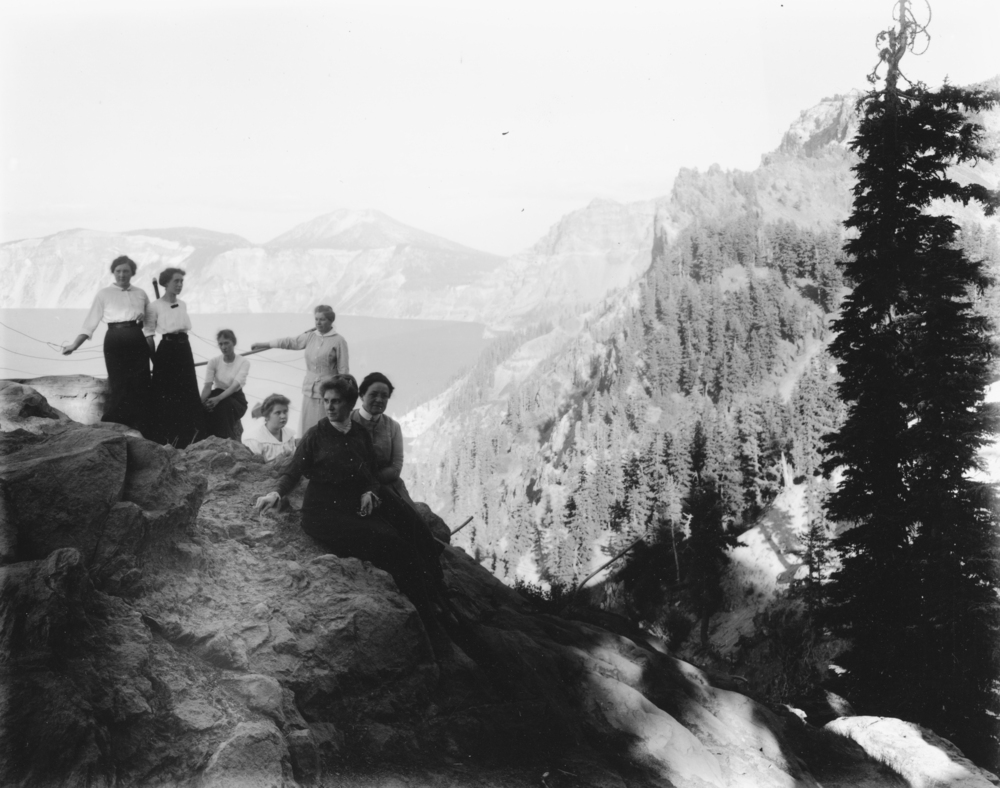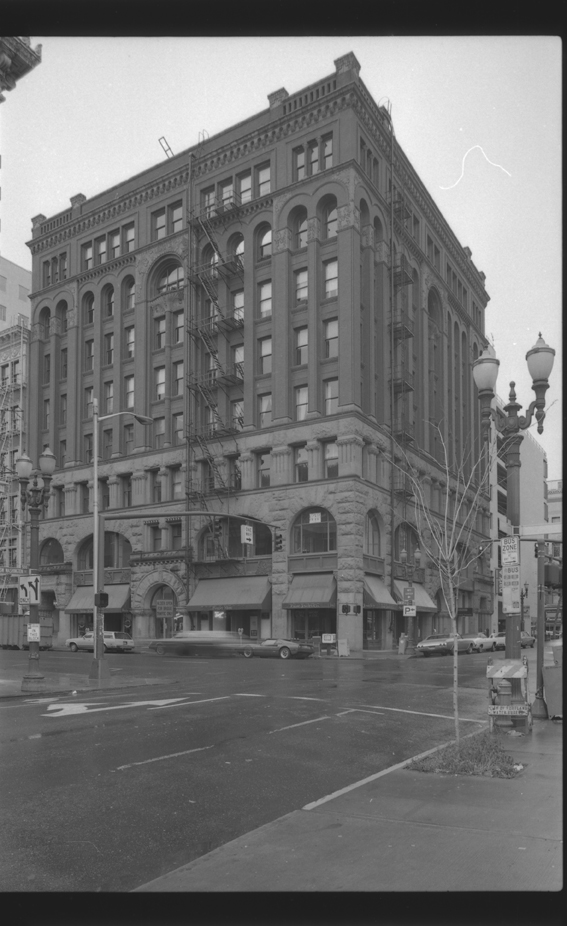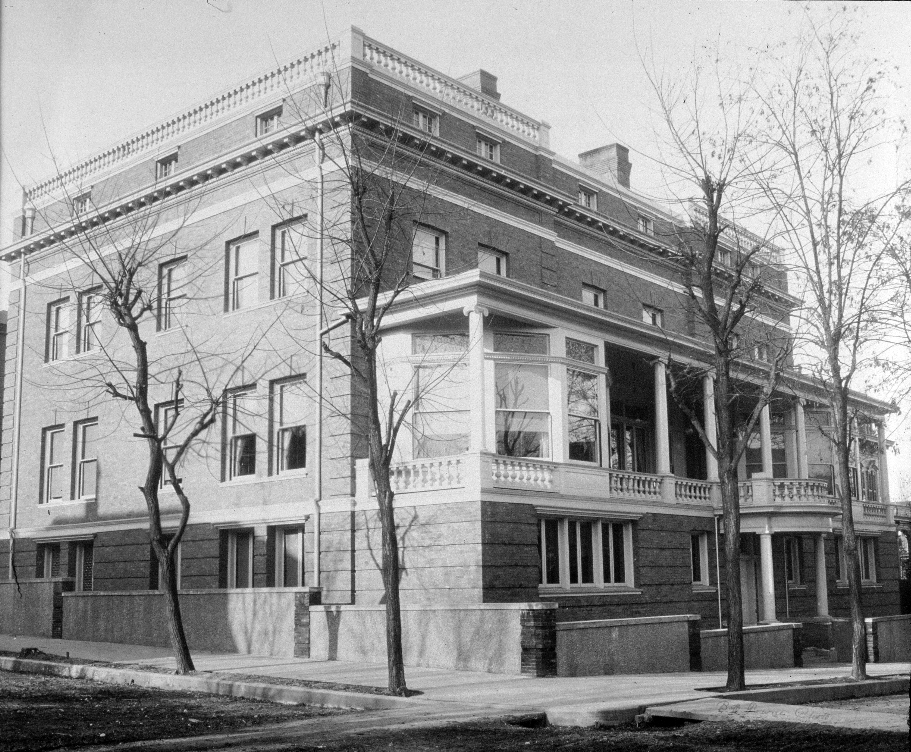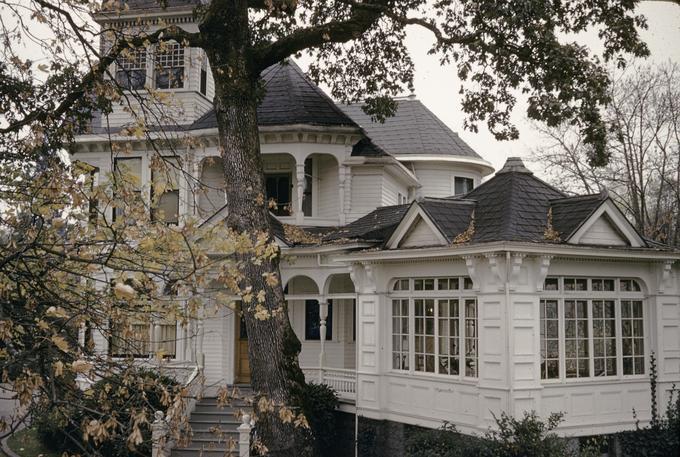For a brief time in the early twentieth century, R. N. Hockenberry was among the most active architects in Oregon, leaving an important legacy of residential, commercial, and civic design. He designed the original Crater Lake Lodge in 1910, which has been designated a National Historic Landmark, and several buildings in Portland and Milwaukie that are now on the National Register of Historic Places. Although in Oregon only briefly, Hockenberry created a style that influenced others, and his buildings continue to be important.
Raymond N. Hockenberry was born in Carbondale, Pennsylvania, on September 17, 1876, the son of Minerva J. Hoffman and H. J. Hockenberry. Hockenberry attended Dickinson College in Carlisle, Pennsylvania, where his father taught. The star halfback on the Dickinson football team and an active member of the school choir, he graduated in 1899, having followed a classical course of study. In 1902, he received a Bachelor of Architecture degree from Syracuse University in New York.
Hockenberry married Florence Tucker, also a Syracuse graduate, in 1905 and worked for the Pennsylvania Railroad and as a draftsman for architectural firms in New York City. In early 1906, the couple moved to Oregon, following his parents to La Grande in eastern Oregon, where his father had accepted a teaching position.
In spring 1906, Florence and Raymond Hockenberry moved to Portland, where he opened R. N. Hockenberry & Company, an architectural firm. He gained quick success, designing dozens of fine homes for Portland business leaders, commercial buildings in La Grande and Prineville, and schools in Philomath and Corvallis and in Kelso, Washington. “Hockenberry must have had considerable work in the office,” one writer speculated, “since he is known to have had at least one or two draftsmen working for him all the time he was practicing in Portland.” In 1909, perhaps in an effort to expand the business, he entered a partnership with Hood River-based architect Robert Rensselaer Bennett. The firm Hockenberry & Bennett survived until at least 1912.
Hockenberry maintained his interest in choir and football and was frequently mentioned in local society news as a featured singer in choral programs in Portland. The March 11, 1906, Oregon Sunday Journal described him as “a widely known athlete and football official.” He also called games for high schools and colleges, including the University of Oregon, the Oregon Agricultural College (present-day Oregon State University), and the State College of Washington (present-day Washington State University).
In October 1910, the U.S. Secretary of the Interior approved R. N. Hockenberry as the architect for Crater Lake Lodge. Little is known about his design process, but the results, an iconic multistory wood-frame lodge perched on the rim of the lake, was a model of a rustic lodge from the early twentieth century. Crater Lake Lodge was designated a National Historic Landmark in 1981. The deteriorating building was closed in 1989 and renovated by the National Park Service for its reopening in 1995.
Other Hockenberry-designed projects include the Gold Hill High School in southern Oregon (1910), the August Olson House in Portland (1910), and The Commodore (Court Street) Apartment building (1910) in The Dalles. All are on the National Register of Historic Places. Other buildings, including Hockenberry’s house at 2149 Northeast Twenty-fourth Avenue in Portland, are part of National Register historic districts. Hockenberry’s design for the Groesbeck House, a bungalow at Twenty-third Avenue and Northeast Everett Street in Portland, was used to illustrate the cover of Pacific Coast Architect in June 1911. Hockenberry & Company continued to design projects in Oregon through October 1915.
Sometime afterward, probably in early 1916, R. N. and Florence Hockenberry and their two sons returned to New York. His parents remained in Oregon, where they lived out their lives in Salem. Settling in Bronxville, New York, Hockenberry worked as a designer for T. P. McLoughlin, Inc., a large heating and plumbing contractor. As far as is known, he never obtained a license to practice architecture, designed another building, or returned to Oregon.
Hockenberry died in October 1951 and was buried in Syracuse, New York.
-
![]()
R.J. Hockenberry, c.1899, Dickenson College Yearbook.
Courtesy Dickenson College Alumni Collection
-
The Pacific Coast Architect, 1911.
The bungalow shown on the front cover of this issue is that of Mr. C. E. Groesbeck. R. N. Hockenberry & Company are the architects. Courtesy The Pacific Coast Architect
-
R.J. and Florence Hockenberry in New York City, 1905.
Courtesy Hope Hockenberry Yelich
-
![]()
R.J. Hockenberry (front and center) with the Dickenson College Football team, 1898.
Courtesy Dickenson College Alumni Collection
-
Louis J. Wilde house designed by R.N. Hockenberry featured in The Oregonian, 1907.
Courtesy The Oregonian
-
R.B. Swezey house designed by R.N. Hockenberry and featured in The Oregonian, 1913.
Courtesy The Oregonian
-
Hockenberry featured in the Oregon Sunday Journal, March 11, 1906.
Courtesy Oregon Journal
-
![]()
Construction of the original Crater Lake Lodge, c. 1910.
Oregon Historical Society Research Library, Kiser, bb000346 -
![]()
Crater Lake Lodge, c. 1930.
Courtesy Oregon State University Libraries
Related Entries
-
![Albert E. Doyle (1877-1928)]()
Albert E. Doyle (1877-1928)
Albert Ernest Doyle was one of Portland’s most successful early twentie…
-
![Crater Lake National Park]()
Crater Lake National Park
Crater Lake National Park, which the U.S. Congress set aside in 1902, i…
-
![Ellis F. Lawrence (1879-1946)]()
Ellis F. Lawrence (1879-1946)
Portland architect Ellis Fuller Lawrence was the leading organizer of h…
-
![McCaw, Martin, and White Architects]()
McCaw, Martin, and White Architects
McCaw, Martin & White was a prominent architectural firm active in Port…
-
![Whidden and Lewis, architects]()
Whidden and Lewis, architects
From 1890 to 1910, the Whidden and Lewis firm dominated architectural d…
-
![William Christmas Knighton (1867-1938)]()
William Christmas Knighton (1867-1938)
William Christmas Knighton, a prolific and innovative architect, served…
Related Historical Records
Map This on the Oregon History WayFinder
The Oregon History Wayfinder is an interactive map that identifies significant places, people, and events in Oregon history.
Further Reading
Ritz, Richard Ellison. Architects of Oregon: A Biographical Dictionary of Architects Deceased, 19th and 20th Centuries. Portland, Ore.: Lair Hill Publishing, 2002.
Pacific Coast Architect. Portland, Oregon (June 1911)
“R. N. Hockenberry Claimed by Death.” Scranton, Pennsylvania Scrantonian, October 21, 1951, 20:6.
“Football Authority Comes Here to Live,” Oregon Sunday Journal, March 11, 1906, 10:2.



